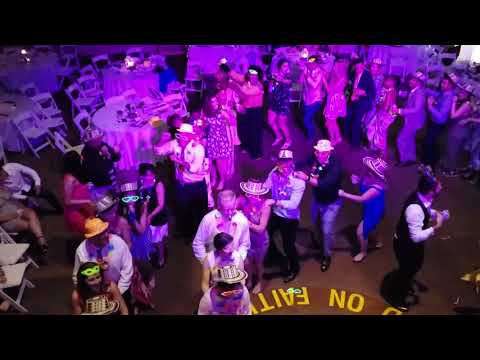Every country has its own wedding traditions, influenced by factors such as its culture, religion, and environment. These wedding traditions reflect their way of living as a whole; learning more about a country’s wedding traditions lets you see an image of how its citizens live their life.
Colombian weddings are lively and cheerful celebrations filled with music and dancing. The candle ceremony, las arras, and la hora loca are some of the renowned Colombian wedding traditions. Below is a list of 15 wedding traditions you will see in a Colombian wedding.
Colombian Wedding Traditions
1. Asado is Served the Next Day
The day after the wedding ceremony, guests congregate once again for more food, celebration, and well-wishes for the newlyweds. The food served during this gathering is typically Asado, a traditional Colombian dish. Asado consists of potatoes, plantain, and beef, though regional and familial variations widely exist.
2. Belt Tradition
Although called a tradition, the belt tradition is more of a game between all the single men in attendance. They will take off their belts, and whoever has the longest belt wins the game. Symbolically, it is a way to measure their masculinity and manliness.
3. Candle Ceremony
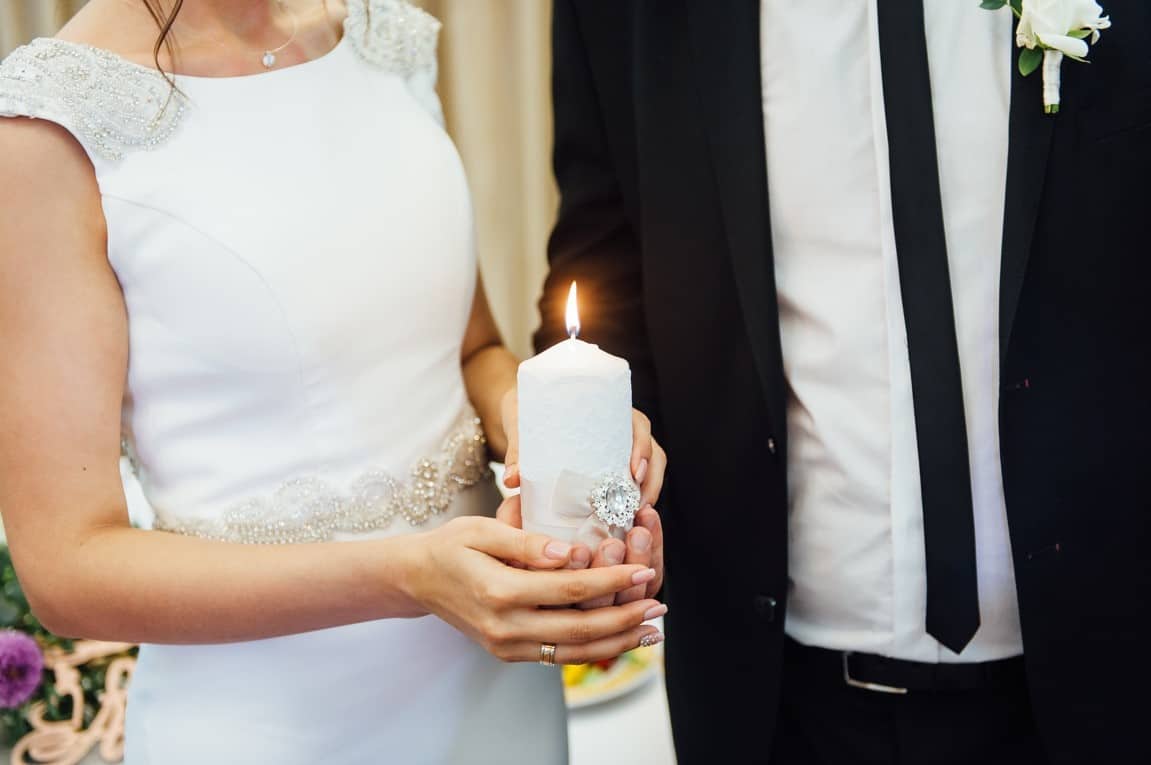
A Colombian wedding tradition, the candle ceremony takes place after the exchange of rings. It starts with the bride and groom lighting separate candles, which they then use to light a candle together. Once that is done, they put out their individual candle. This act symbolizes their unity and commitment; their marriage is binding, and they have now become one. They leave the church carrying the candle they lit together. This tradition is also practiced in other countries like Ecuador.
4. Colombian Bridal Shower
A Colombian bridal shower follows the typical itinerary of Western bridal showers. However, it has a deeply sentimental and touching segment. The mother of the bride-to-be entrusts valued and precious items to her daughter, which she can use in the next chapter of her life as a married woman. Additionally, common gifts in a Colombian bridal shower include plates, silverware, candle stands, and so on.
5. Dancing-Filled Reception
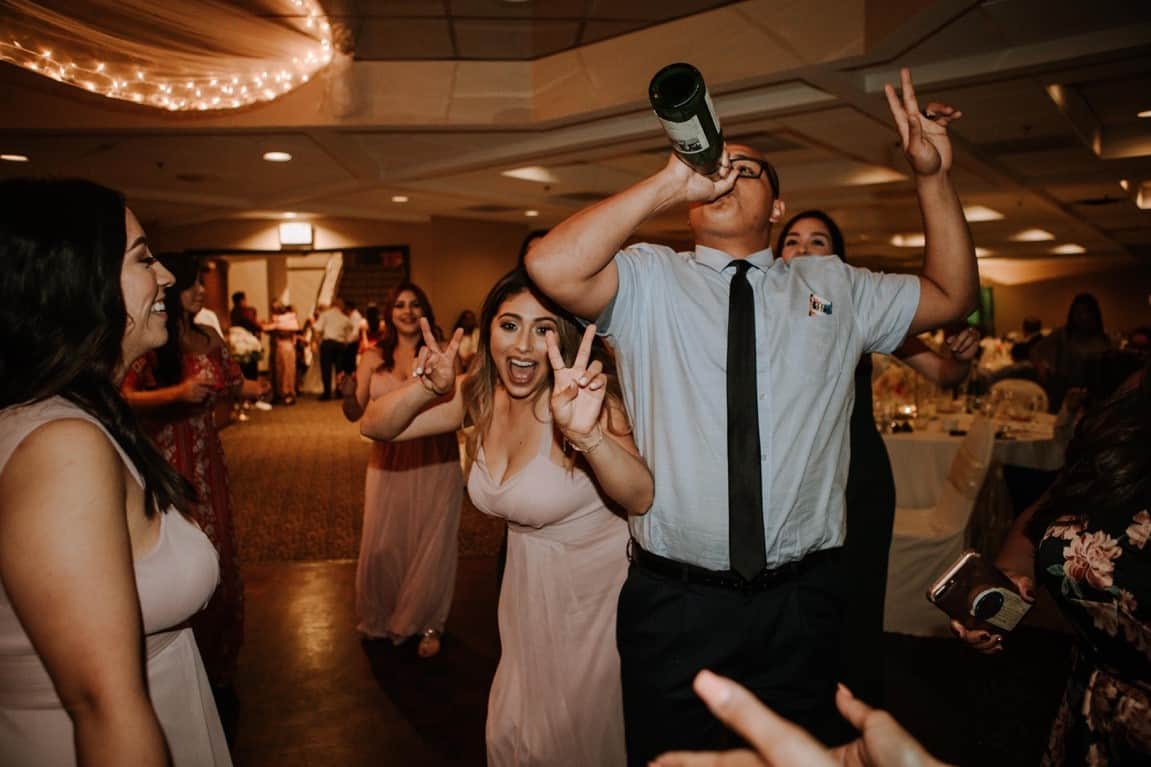
Colombian wedding receptions are largely influenced by Brazilian traditions. This is especially evident in the reception, wherein a celebration called Carnavalito takes place. This is marked by masks, vibrant accessories, and Brazilian music.
During the reception, the bride and groom give small wedding favors called detalles to their guests.
The wedding cake, which is traditionally a black fruit cake soaked in red wine, is cut and served. As this takes place, guests will drink aguardiente, whose literal translation is firewater; it is an anise-flavored liqueur typically with 24%–29% alcohol content.
A sharp contrast between Colombian weddings and American weddings is that there are no speeches made during the reception. With that said, after the cake-cutting ceremony, Colombians go straight to the dance floor.
Popular genres of music include reggaetón, vallenato, cumbia, and merengue. These are well-known genres of music and dance within Latin America. Admired artists include J Balvin, Feid, Piso 21, and Maluma, and you might also hear songs by Shakira every once in a while.
6. Flowers Everywhere
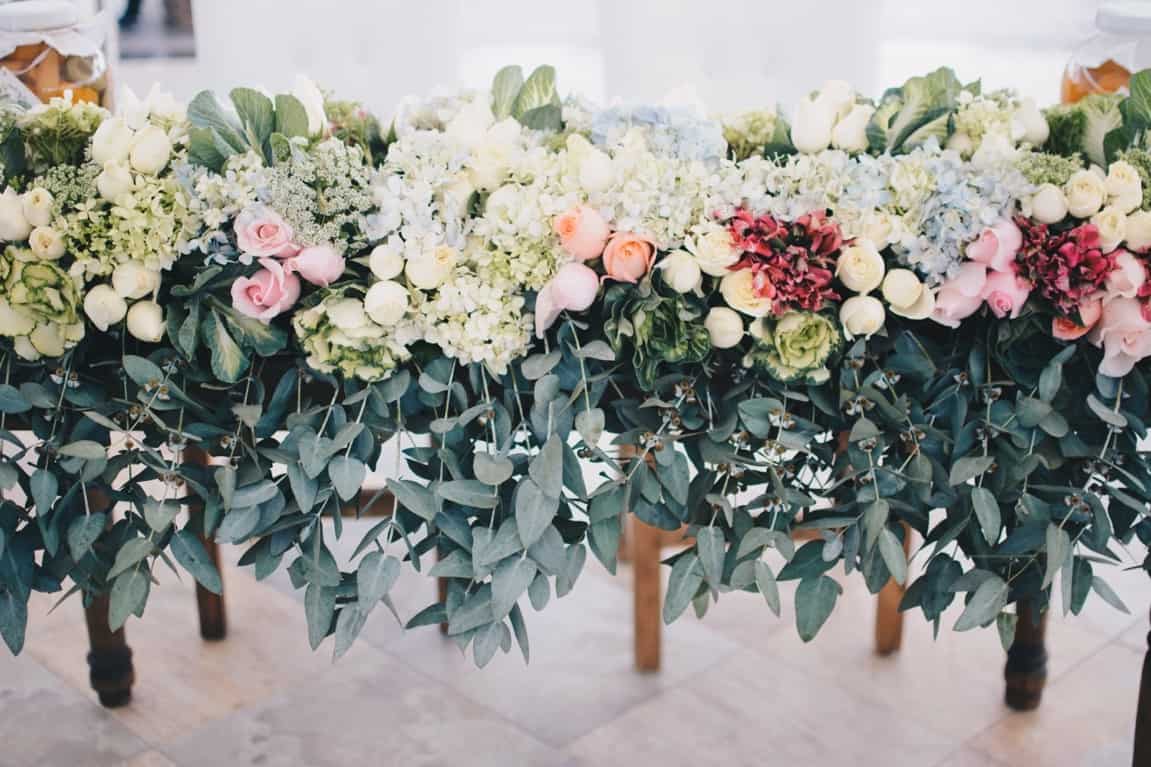
Colombia is world-renowned for its rich and diverse variety of flowers. It then follows that most weddings in Colombia work closely with wedding decorators and florists to incorporate the beauty of flowers into the ceremony.
7. Godfather and Godmother
In Colombian weddings, there are no bridesmaids, maid of honor, and best man. Instead, a Godfather and Godmother are assigned. Their role is to guide the bride and groom through their special day and provide any useful counseling and advice for married life; in particular, the Godfather attends to the groom while the Godmother attends to the bride. This practice can also be seen in Dominican weddings.
8. Las Arras — the Gold Coins
Colombian weddings generally follow a Catholic ceremony, as it is the predominant religion in the country. One of the most well-known wedding traditions in Colombia, las arras involves 13 gold coins that are blessed and exchanged during the ceremony, which symbolize Jesus and the 12 Apostles.
After the blessing, the priest will hand over the coins to the groom, who will then give them to the bride. This act metaphorically represents “what’s mine is now yours,” and symbolizes the groom’s readiness to care and provide for his bride.
The coins are covered in lace. The lace will then be preserved so it could be used for the Christening hat for the couple’s first child.
9. La Hora Loca — The Crazy Hour
- Flamenco
- Explosion
- Brazilian-themed
- Cuban-themed
- Samba
- Masquerade
- Hawaiian Luau
- Patriotic
- Salsa
- Mardi Gras
10. Mantilla
Mantilla refers to a silk or lace scarf worn by women that will cover their hair and shoulders. At a Colombian wedding, the bride wears a mantilla adorned with flowers. This shields her from the glare of the sun and the stares of the guests. Moreover, the flowers on the bride’s mantilla, or las flores, is a symbol of purity; they also represent the Virgin Mary and the ideals associated with Her.
11. Placing Shoes Under the Bride’s Dress
A fun Colombian wedding tradition involves single male guests placing their shoes underneath the bride’s dress. Once the shoes are gathered, the bride will blindly pick one shoe from the pile. Similar to a bouquet toss and a garter toss, whoever’s shoe gets picked is believed to be the next man to get married.
12. Putting a Coin in the Bride’s Shoe
Another renowned Colombian wedding tradition is one wherein the bride places a coin inside her shoe. This act represents her hope that she and her partner will never face a time in their married life wherein they cannot afford their basic needs.
13. Serenading the Bride-to-Be
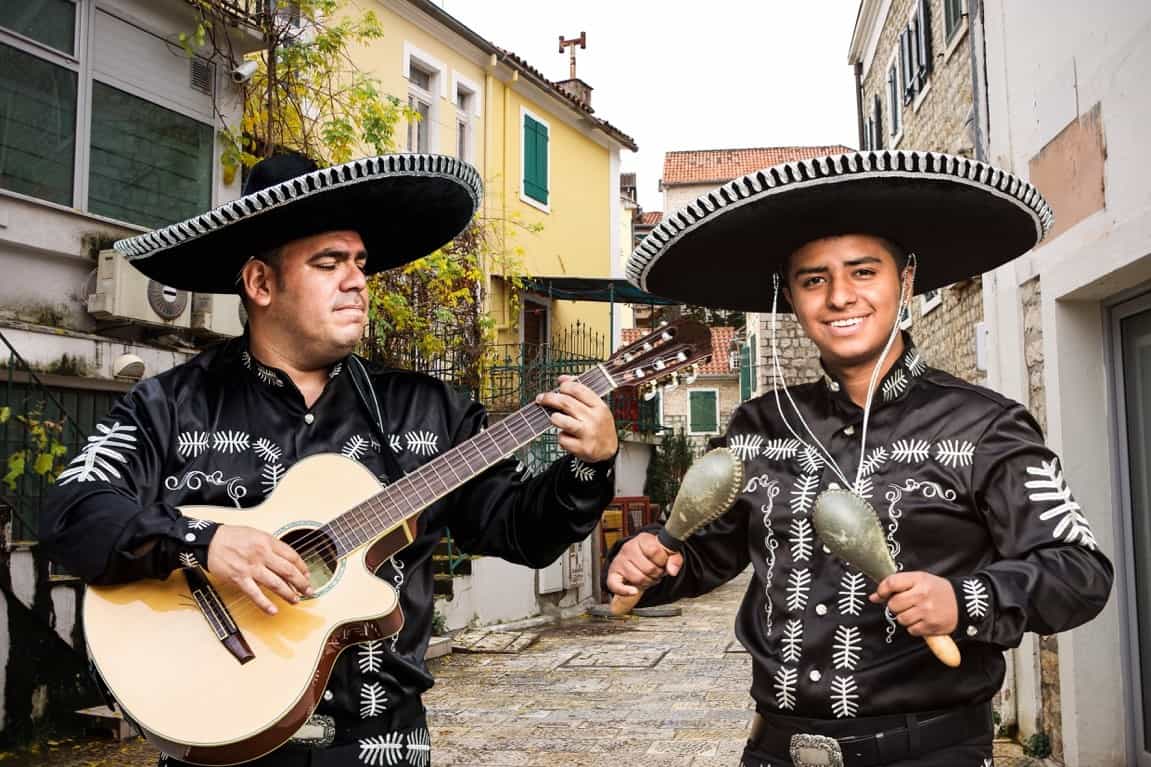
Before the wedding, the groom-to-be surprises his bride-to-be by performing a romantic song. Also known as the Serenata, this Colombian wedding tradition involves the groom-to-be and a band singing a song in front of their friends and family. Although viewed as an informal gesture, the serenade generally marks the beginning of the wedding procession; moreover, the performance precedes a party. This tradition can also be found in other Hispanic countries like Costa Rica.
14. Small Guest Lists
The average Colombian wedding has 91 guests, compared to Indian weddings which average at 525 guests. According to many, being invited to a Colombian wedding is meaningful and usually seen as a big honor.
Corollary to this, the average Colombian couple has been found to have the shortest wedding planning period, which lasts for seven months. Moreover, they cover around 55% of the wedding budget, while the rest is borrowed or given.
15. Wearing a Guayabera
Final Thoughts
Colombian wedding traditions highlight the country’s rich cultural heritage and the importance it places on community and celebration. Each ritual, from dances to symbolic gestures, underscores the value Colombians give to love and commitment.
These ceremonies not only honor the past and ancestral customs but also set a foundation for the future, ensuring that generations to come will cherish and uphold these heartfelt traditions.
